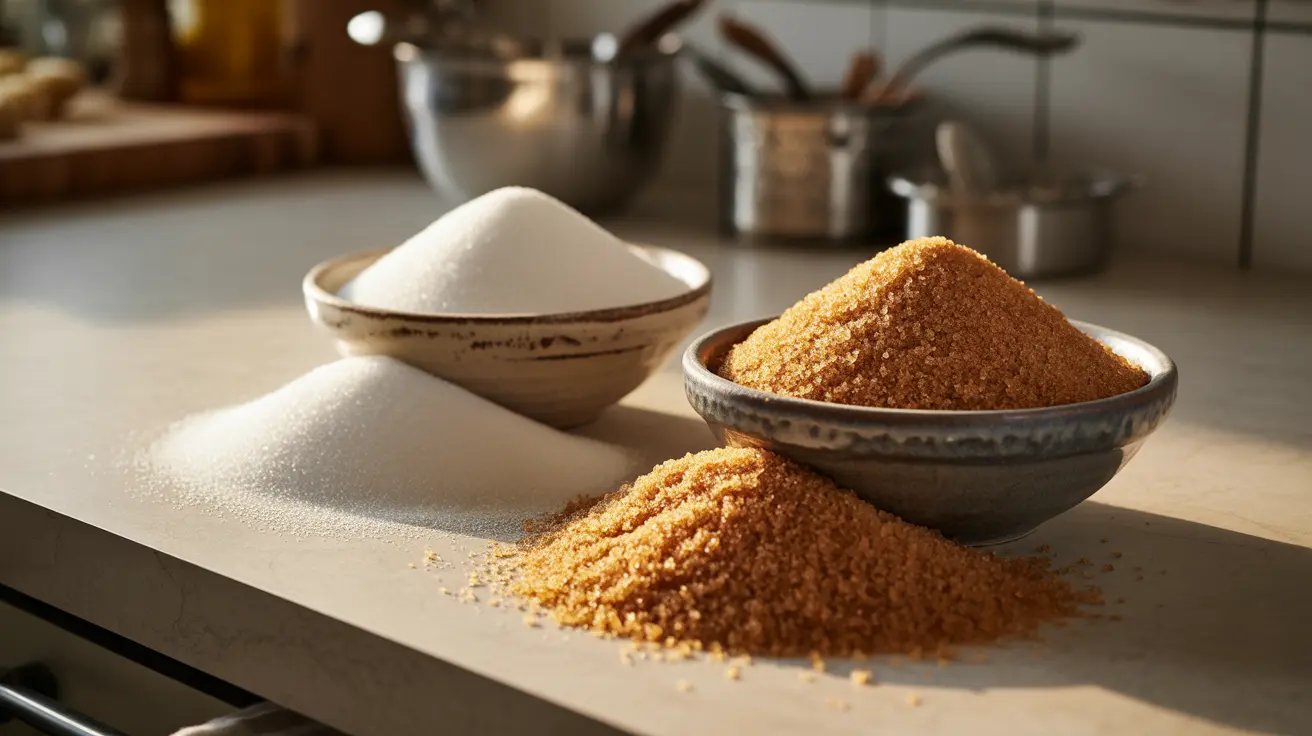When it comes to sweetening our food and beverages, both brown sugar and white sugar are common choices. However, many people wonder about their differences and whether one might be healthier than the other. Understanding the distinctions between these two sweeteners can help you make more informed decisions about your sugar consumption.
In this comprehensive guide, we'll explore the key differences between brown sugar and white sugar, examining their nutritional profiles, health impacts, and best uses in cooking and baking. We'll also discuss healthier alternatives for those looking to reduce their sugar intake.
Understanding the Composition of Brown and White Sugar
White sugar, also known as granulated sugar, is made from sugarcane or sugar beets that undergo extensive processing to remove all molasses content. This refining process results in pure sucrose crystals that are white in color and uniform in texture.
Brown sugar, on the other hand, consists of white sugar combined with molasses, which gives it its characteristic color and slightly different nutritional profile. The amount of molasses added determines whether it's light or dark brown sugar, with dark brown sugar containing more molasses.
Nutritional Comparison
Despite their different appearances, brown sugar and white sugar share many similar nutritional characteristics:
- Both contain approximately 4 calories per gram
- Both are primarily composed of sucrose
- Both have minimal essential nutrients
- Both are considered added sugars in dietary guidelines
The main nutritional difference lies in the trace minerals present in brown sugar due to its molasses content, including small amounts of:
- Calcium
- Potassium
- Magnesium
- Iron
Impact on Blood Sugar and Health
Both brown and white sugar affect blood glucose levels similarly, as they are both forms of sucrose. When consumed, they are broken down into glucose and fructose, causing a rapid rise in blood sugar levels. This similarity means that neither option is significantly better for blood sugar control.
From a health perspective, both types of sugar should be consumed in moderation as part of a balanced diet. The presence of trace minerals in brown sugar is too minimal to provide meaningful nutritional benefits.
Culinary Applications and Differences
Brown and white sugar have distinct characteristics that make them better suited for different culinary purposes:
White Sugar Uses
- Baking where a neutral sweet taste is desired
- Beverages and cocktails
- Preserving fruits and making jams
- General sweetening
Brown Sugar Uses
- Adding moisture to baked goods
- Creating caramel flavors in desserts
- Glazes and marinades
- Recipes requiring a deeper, molasses-like flavor
Healthier Alternative Sweeteners
For those looking to reduce their sugar intake, several alternatives offer better nutritional profiles:
- Stevia (natural, zero-calorie sweetener)
- Monk fruit extract (natural, zero-calorie option)
- Pure maple syrup (contains minerals and antioxidants)
- Raw honey (provides additional nutritional benefits)
- Date sugar (made from whole dried dates)
Frequently Asked Questions
What are the main nutritional differences between brown sugar and white sugar?
Brown sugar and white sugar have similar caloric content and effects on the body. The main difference is that brown sugar contains small amounts of minerals from molasses, including calcium, potassium, magnesium, and iron, though these amounts are nutritionally insignificant.
How do brown sugar and white sugar affect blood sugar levels and overall health?
Both brown and white sugar have nearly identical effects on blood sugar levels, as they are both forms of sucrose. They both cause rapid increases in blood glucose and should be consumed in moderation to maintain good health.
Can brown sugar be considered a healthier alternative to white sugar?
While brown sugar contains trace minerals, the amounts are too small to make it significantly healthier than white sugar. From a health perspective, both should be treated as added sugars and consumed sparingly.
How do brown sugar and white sugar differ in their uses for cooking and baking?
Brown sugar adds moisture and a distinct molasses flavor to baked goods, making it ideal for recipes like cookies and glazes. White sugar provides pure sweetness without additional flavors, making it versatile for general baking and sweetening needs.
What are some healthier alternatives to brown and white sugar for sweetening foods?
Healthier alternatives include natural sweeteners like stevia, monk fruit extract, pure maple syrup, raw honey, and date sugar. These options often provide additional nutritional benefits or fewer calories compared to traditional sugars.




